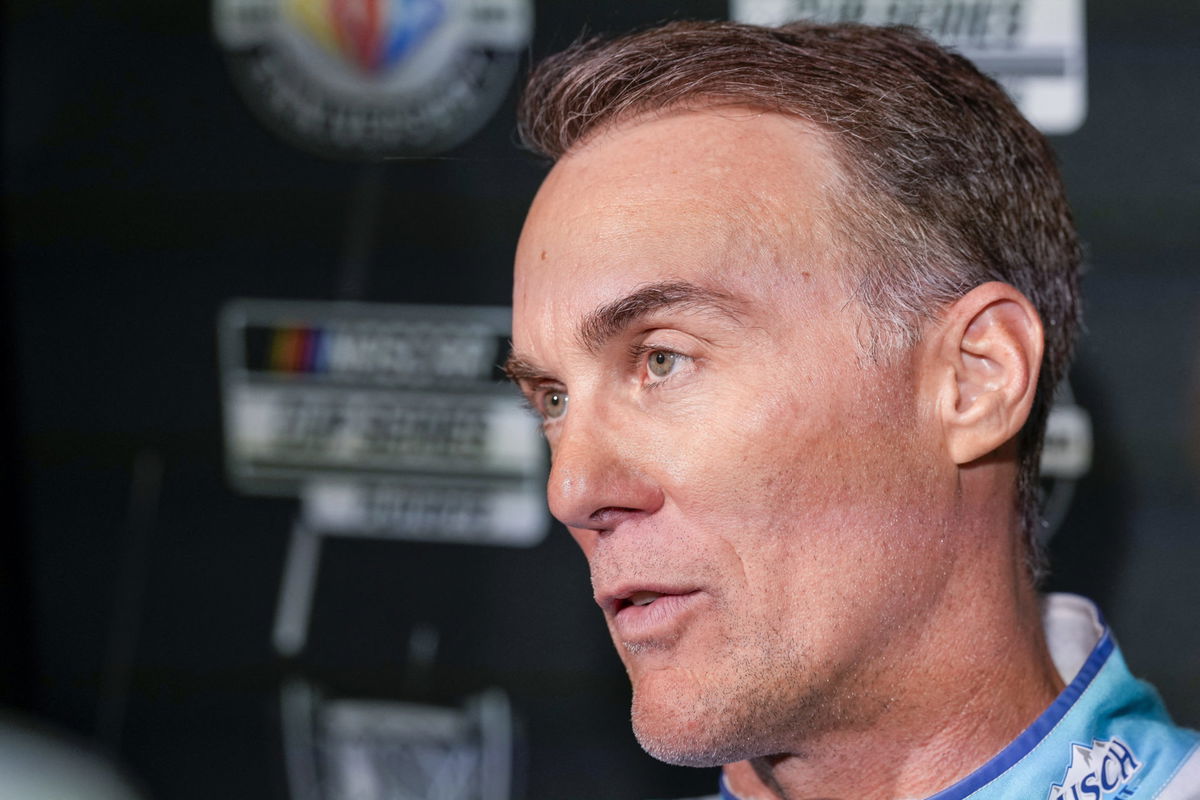
Imago
Aug 31, 2023; Charlotte, North Carolina, USA; Kevin Harvick answers questions from the media at Charlotte Convention Center. Mandatory Credit: Jim Dedmon-USA TODAY Sports

Imago
Aug 31, 2023; Charlotte, North Carolina, USA; Kevin Harvick answers questions from the media at Charlotte Convention Center. Mandatory Credit: Jim Dedmon-USA TODAY Sports
In the sepia-toned lore of NASCAR, superspeedway racing was a different beast entirely. Legends like Dale Earnhardt Sr. didn’t just win; they controlled the massive packs at Talladega and Daytona by exploiting the air like a 6th sense. It was a perilous ballet of immense, symmetrical Gen-4 stock cars, where true skill meant mastering the subtle art of side draft and the gentle, almost impeccable bump-draft on a chassis designed for brute force.
Watch What’s Trending Now!
Fast forward to the 2025 Talladega Superspeedway fall race, the crucible of the NASCAR Cup Series Playoffs, and the landscape has been utterly transformed by the Next Gen car. This race featured an astonishing 77 lead changes among 27 drivers, and has been critiqued by NASCAR veteran Kevin Harvick for a lackluster beginning.
ADVERTISEMENT
Kevin Harvick calls out flaws in modern superspeedway racing
In response to Kaitlyn Vincie’s question about the race’s unique flow on his Happy Hour podcast, Kevin Harvick reflected, “I think it’s been what we’ve seen, right? I think that if I’d have turned it on with 25 laps to go, I’d have been like, ‘Man, that was a bad–s race.'” This comment perfectly captures the modern-day paradox of superspeedway racing. Harvick acknowledges that while the final segment of the YellaWood 500 was indeed a thrilling spectacle, the early and middle portions were likely muted by strategic calculations.
He pointed to the primary culprit, saying, “I think that the fuel mileage and all the things that happened in the beginning of the races just make it different. And there were savings and not savings and people backing the pace up.” Historically, Talladega stages are often characterized by drivers lifting off the throttle and aggressively brake-checking to save fuel to make it to the end of a stage or the race itself, sacrificing raw speed for track position and pit strategy, which dilutes the frenzied laps.
The dramatic conclusion, however, was immediately captivating, as Harvick noted, “But at the end, it was very exciting to watch and very intense for the way that the race finished. Now I understand that there are moments that lead up to getting towards the finish. And the drivers all know how to get to the finish, as we watched a video clip here of Kyle Larson running out of gas at the end of the race.” The No. 5 Hendrick Motorsports Chevrolet was leading the low line on the backstretch of the overtime finish, poised for his first superspeedway win, when it sputtered dry and dropped out of the draft.
ADVERTISEMENT
Harvick detailed the immediate ripple effect of Larson’s fuel shortage. “That really broke that bottom line up and allowed Briscoe to get underneath Bubba Wallace right there with his teammate tucked in right behind him and Ty Gibbs. And they were able to get themselves organized and get to the start-finish line first. So just a great finish.” The opening created a split-second window for the Joe Gibbs Racing teammates, Briscoe and Gibbs, to execute a textbook push, propelling the No. 19 Toyota to the checkered flag for a dramatic overtime win and securing his win in the Championship 4.
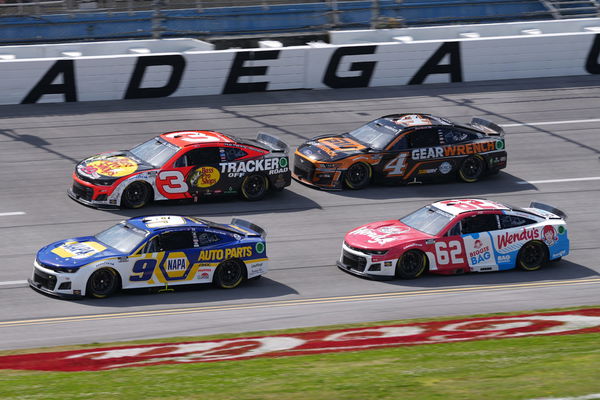
USA Today via Reuters
Apr 24, 2022; Talladega, Alabama, USA; NASCAR Cup Series driver Chase Elliott (9), Austin Dillon(3), Kevin Harvick(4) and Noah Gragson (62) race during the GEICO 500 at Talladega Superspeedway. Mandatory Credit: Jasen Vinlove-USA TODAY Sports
The retired champion then transitioned to discussing the necessary evolution of superspeedway rules, saying, “I think that there’s definitely some things that need to happen with superspeedway racing that allow us to see what we saw at Daytona. I think a lot of that if we need another stage, what do we need to do to break up all the fuel mileage stuff to have those goals in the middle of the race to get rid of those?” Harvick championed a philosophy of constant regulatory change for these unique tracks, believing that if the rules remain static, teams will figure out the most efficient strategy inevitably.
ADVERTISEMENT
He also while also commented on the competitive balance, “I do think that the Fords lost a little bit of their advantage compared to the Chevys and the Toyotas this time around, which is, as we keep going with the same rules, things become more and more even. And then it becomes about strategy.” He focused his critique on the physics of the Next Gen car’s drafting package, expressing frustration that the effort required doesn’t equate to a sufficient speed gain.
“I still don’t like the fact that you can push as hard as they can push and not get more rewarded for it. I don’t know how we fix that problem of when the two cars get connected that it’s a bigger difference of speed than what it is right now.” He elaborated, “But the amount of time that they spend pushing and shoving to not have it be mixed up more isn’t how it needs to be. Isn’t how you want superspeedway racing to be.” This lack of reward for intense, connected drafting leads directly to the “Big One” as drivers over-aggressively push past the limit to create any separation.
ADVERTISEMENT
The wreck of Chris Buescher, which forced the overtime finish, was a perfect example of the chain reaction push from the line behind William Byron, overloading Buescher’s car, proving the high-risk, low-reward nature of the current draft. Harvick concluded, saying, “So we’ve got to be able to figure out how to make the intensity of the pushes mean more with the speed gain in the cars that are happening. Because they just get locked into that double file racing. But awful late to make a change when it’s already end of October to get to the Daytona 500.”
So, until the rules reward the sheer intensity of the push with a measurable speed advantage, superspeedway finishes will remain a coin flip between exciting intensity and unavoidable chaos. On the other hand, Harvick has also broken down Toyota’s superspeedway weaknesses.
Top Stories
‘RIP’: NASCAR World Crumbles in Tears as 39-YO Former JR Motorsports Driver Passes Away
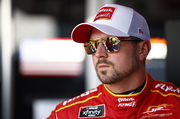
Courtroom Falls into Dead Silence as Heather Gibbs’ Heart-Ripping Account of Husband Coy’s Death Stuns the Trial
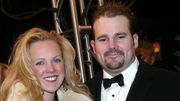
31-YO NASCAR Cup Team Joins Hands With Richard Childress to Leave Ford Alliance After 2025 Reality Check
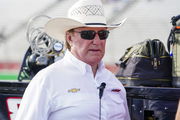
What Happened to Bill Elliott? Does Chase Elliott’s Father Have Cancer?

Michael Jordan Exposes NASCAR’s Harsh Reality as Jim France & Family Faces Uncomfortable Questions
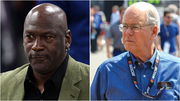
ADVERTISEMENT
Kevin Harvick explains why Toyotas struggle in pack racing and draft battles
Kevin Harvick, reflecting on superspeedway dynamics on his podcast, pointed to Toyota’s unique handling as a critical factor in pack racing. “It’s very difficult to push a Toyota because of the way that their cars handle and the way that their tail is shaped. ‘It’s just super easy to spin them out,'” he explained, highlighting a vulnerability that even raw horsepower cannot overcome.
Harvick recalled a striking example at Daytona in February 2023: “I wrecked Tyler Reddick… just breathing on the back bumper spun him out. From a Ford guy’s standpoint, when you’re pushing another Ford, you can be really aggressive in how you push that car compared to when you’re pushing a Toyota; you got to think about what you’re doing.” This demonstrates how Toyota’s sleek, low-drag design works well solo but falters in aggressive draft situations.
Denny Hamlin also voiced similar frustrations, noting that tight handling of Toyotas complicates passing: “These cars are just so planted. I can’t tell you enough how much that’s the case, that they’re stuck to the racetrack… unsticking them somehow.” With identical engines across manufacturers, aerodynamics now define pack stability, and Harvick’s insights reveal why Ford’s more robust setup gives drivers subtle advantages in high-speed drafting battles.
ADVERTISEMENT
ADVERTISEMENT
ADVERTISEMENT
ADVERTISEMENT

